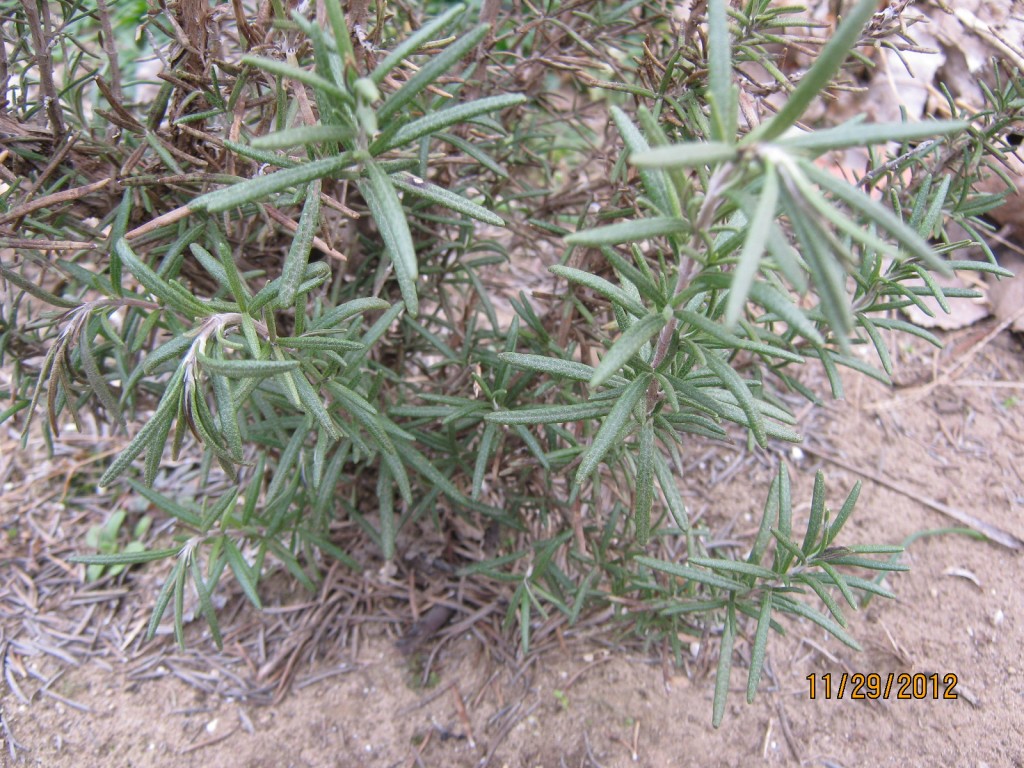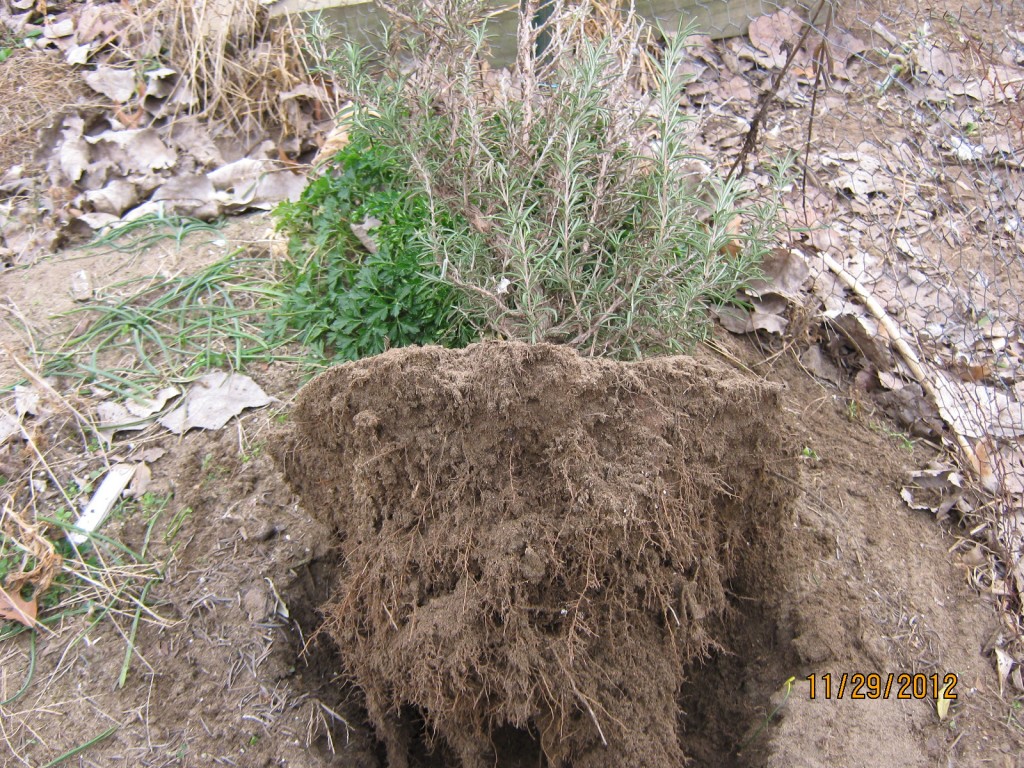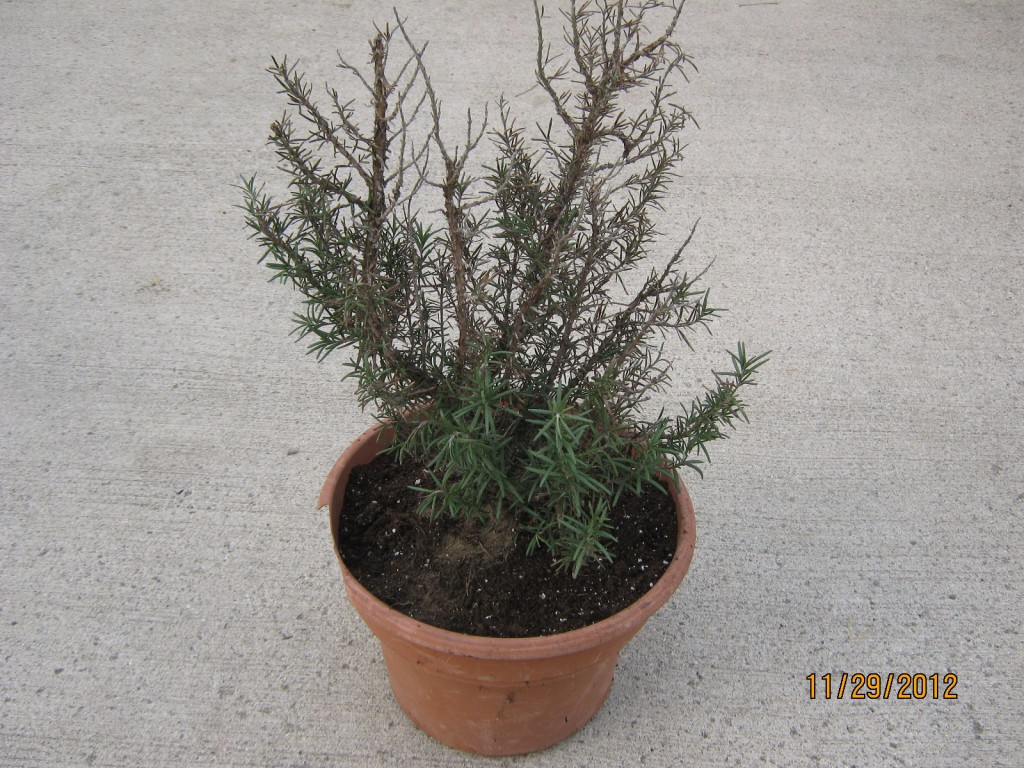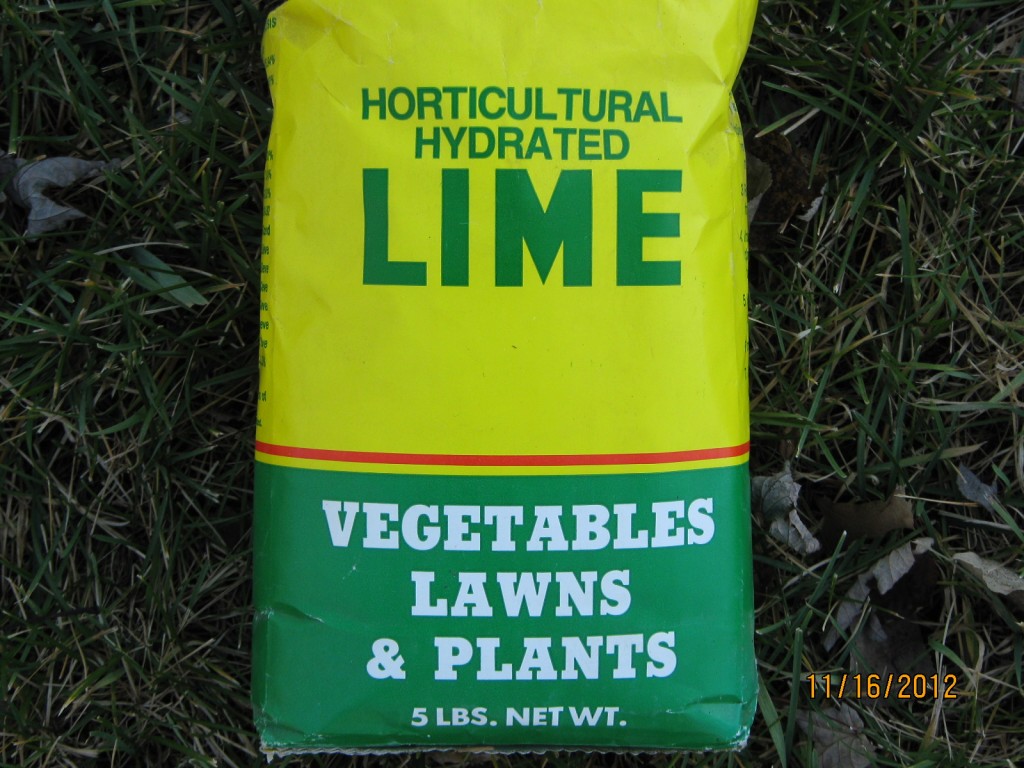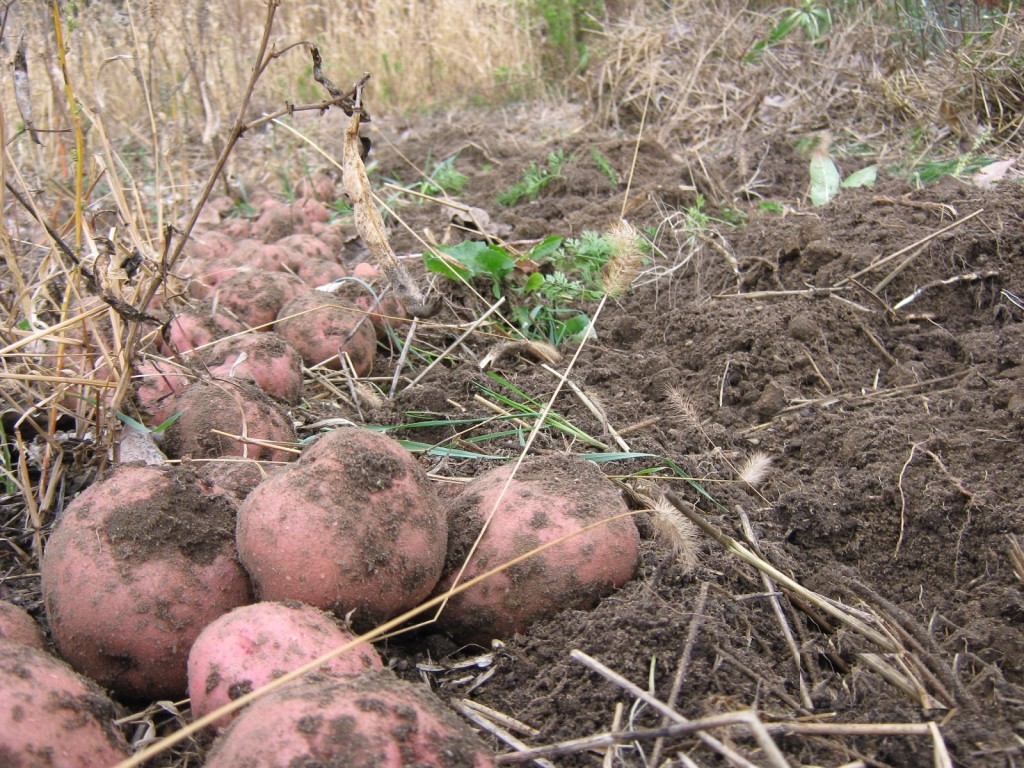Last spring, I had a rosemary plant in a six inch pot that over-wintered in the garage. It looked like it could use a vacation, so, I took it out of its pot and planted it directly into the garden.
While in the garden, it suffered the regular abuse that you expect a rosemary plant to endure. Whenever I needed rosemary for cooking, I pulled off leaves. Also, I tore off a few stems to use for starting some new plants from cuttings. It certainly didn’t get coddled during the summer.
This fall it survived those nights when the temperatures dipped down into the teens. Normally, rosemary can’t deal with our harsh winter temperatures. I have in the past, had one or two, by chance, survive a mild winter.
This week, I finally decided to dig and re-pot this tough little plant. Despite all of the abuse and neglect, the roots grew large enough to fill a 12 inch pot. Also, the dead and damaged stems needed some pruning. Otherwise, it looks to be in pretty good shape.
My plan is to let it rest in our cool, dimly lit garage over winter, just like last year and plant it out in the garden again next spring.
Bob
